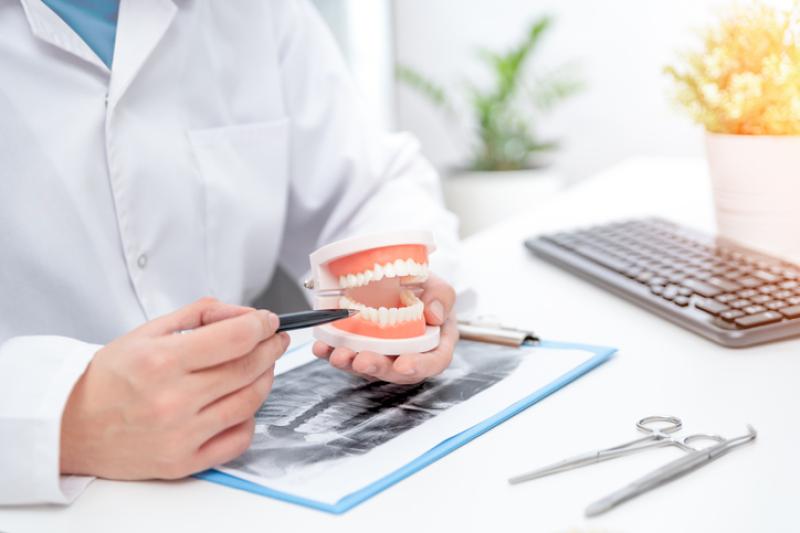How Do Teeth Move?

Many associate teeth with strength. After all, it takes a certain amount of force to remove them. It makes you wonder how you can make them budge without teeth falling out. In orthodontics, they're very familiar with teeth movement. Orthodontics is a specialized branch of dentistry that focuses on diagnosing, preventing, and treating dental issues caused by misaligning teeth. How exactly does their expertise play into understanding teeth movement? You can find all the answers to that question and more here.
What Causes Teeth Movement
Teeth movement is subtle. You might not realize it, but it could be the case for you. So, what exactly can cause teeth to move? Here are a few common ones:
- Lower jaw continues to grow: Did you know your lower jaw continues to grow forward throughout life? This forward growth is very slow and small in magnitude, but it can result in your lower front teeth bumping into the upper front teeth from behind. In turn, it causes either your upper front teeth to space out or your lower front teeth to get crowded (crooked).
- Lower jaw width shrinks over time: Your lower jaw width shrinks, especially between your lower canines. Consequently, it causes your lower front teeth to move and become more crowded over time.
- Grinding & tooth wear: Grinding (gnashing or clenching) your teeth (bruxism) not only causes excessive tooth wear and possible damage to tissues surrounding your teeth but also create movement in your teeth. The result is shorter teeth, bite changes and, in severe cases, facial changes.
- After tooth or bone loss: Our teeth continue to grow throughout life. If one of your teeth is removed, the teeth next to it and opposite to it will shift into the space created. For example, if your lower first molar is removed, your upper first molar may move into that spot, and your lower second molar may start shifting forward. Also, tooth shifting is common if diagnosed with periodontal disease and often causes gaps between teeth.
- Orthodontic treatment: Moving teeth orthodontically with treatments like braces or Invisalign is meant to shift them to the right position. After treatment, they can shift, so it's important to keep wearing retainers to maintain their position.
How Does Orthodontic Treatment Move Teeth?
The process of teeth movement begins with the orthodontist determining the best course of action for the patient. It can involve taking x-rays, impressions, and photographs of the teeth and jaw. The orthodontist will develop a customized treatment plan based on the patient's needs.
The next step in the process of teeth movement is the placement of the braces, retainers, or other corrective devices. The braces or other appliances will be carefully placed on the teeth to move them into the desired position gradually. The orthodontist will then adjust the braces or other devices during orthodontic treatment to ensure the teeth move in the correct direction. Afterwards, when treatment is done, your orthodontist will recommend using a retainer to avoid your teeth shifting back into the same misaligned position.
What Factors Influence the Movement of Teeth?
Several factors can influence the movement of teeth. It can include the type of orthodontic treatment used, the severity of the orthodontic issue, and the patient's age. The type of orthodontic treatment used can affect the treatment's length and the speed and direction of the teeth' movement. Furthermore, the severity of the orthodontic issue can also affect the movement of the teeth. For example, more severe orthodontic problems may require longer treatment times and more complicated treatment plans. The patient's age can also influence the movement of the teeth, as younger patients tend to have faster and more responsive teeth movement. Finally, the patient's commitment to the orthodontic treatment can also affect the movement of the teeth. Patients who follow their orthodontist's instructions and wear their braces or other devices as directed can expect faster and more effective results.
Teeth movement can occur from various sources. Orthodontic treatment is one of them. It's also the one that can fix unnecessary teeth movement by improving your mouth's health, function, and aesthetics by correcting the alignment of the teeth and jaw. The process of teeth movement is complex, involving braces, retainers, removable appliances, and other corrective devices to ensure gradual movement. The timeline for teeth movement depends on the type of orthodontic treatment used, the severity of the orthodontic issue, and the patient's age. With these in mind, you can see how teeth movement works either against you or in your favour.
More to Read:
Previous Posts:





